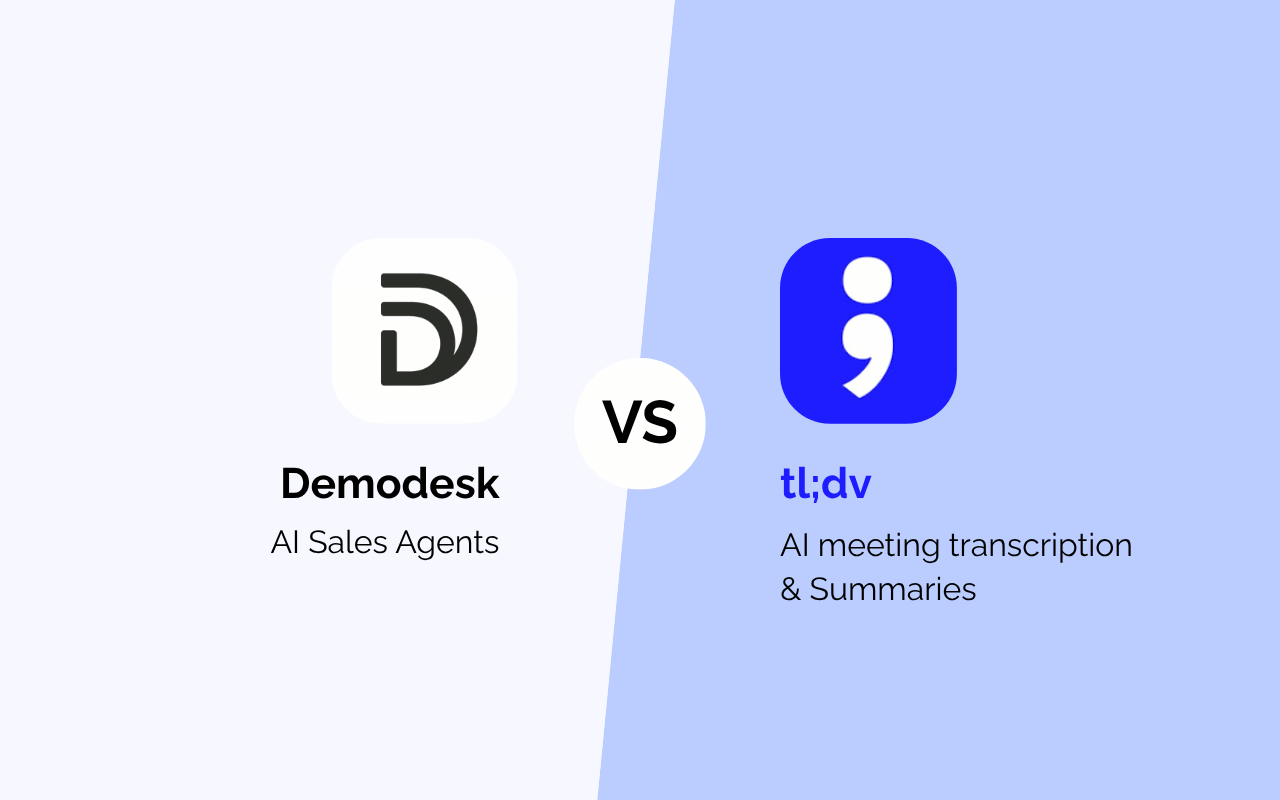Telearbeit und digitale Transformation sind schnell Teil unseres Alltags geworden. Ein Verkaufsgespräch zu führen, hätte früher bedeutet, an einen physischen Ort zu reisen und sich persönlich zu treffen. Aber dank der sich ständig verbessernden Technologie können wir jetzt bequem von unserem eigenen Schreibtisch aus an einer Besprechung teilnehmen — oder wo auch immer wir uns gerade befinden.
Virtuelle Besprechungen sind zwar praktisch und sparen Zeit, die Sie sonst auf Reisen verbringen würden, bringen aber auch ihre eigenen Herausforderungen mit sich. Es kann schwieriger sein, eine Verbindung herzustellen und Ihr Publikum vollständig einzubeziehen. Es kann schwieriger sein, eine Verbindung herzustellen und Ihr Publikum vollständig einzubeziehen, wenn Sie sich nicht physisch im selben Raum befinden.
Das Lesen der Körpersprache wird schwieriger, was es schwieriger macht, den Raum zu lesen und zu wissen, ob Ihre Präsentation gut aufgenommen wird. Außerdem stehen Sie vor der zusätzlichen Herausforderung, darum zu kämpfen, die volle Aufmerksamkeit Ihres Publikums zu behalten, wenn Ablenkungen wie E-Mail-Benachrichtigungen oder andere Unterbrechungen nur einen Klick entfernt sind.
Wie können Sie bei so vielen Ablenkungen und kurzen Aufmerksamkeitsspannen in einer virtuellen Umgebung Ihren Pitch hervorheben? Mach dir keine Sorgen! Wir haben einige großartige Tipps, die Ihnen helfen, ein virtuelles Verkaufsgespräch zu erstellen, das Aufmerksamkeit erregt, Ihr Publikum fesselt und Ihre Botschaft effektiv vermittelt.

1. Kenne dein Publikum
Sie sollten von Anfang an eine gute Vorstellung davon haben, mit wem Sie sprechen werden Prozess zur Lead-Generierung, aber damit Ihr Pitch wirklich hervorsticht, müssen Sie sich eingehender mit ihren spezifischen Bedürfnissen befassen.
Wer sind sie und was brauchen sie von deinem Pitch? Was sind ihre Probleme, die sie von dir lösen sollen, und welche Ziele wollen sie mit deiner Hilfe erreichen? Wenn Sie einen virtuellen Pitch halten, ist es wichtiger denn je, die Aufmerksamkeit Ihres Publikums auf sich zu ziehen — die Aufmerksamkeit Ihres Publikums direkt vor den Toren. Sie möchten nicht die ersten zehn Minuten damit verbringen, eine allgemeine Einführung durchzugehen und den Fokus zu verlieren, bevor Sie zu den guten Dingen kommen.
Machen Sie Ihre Hausaufgaben und informieren Sie sich vor Ihrer Präsentation über potenzielle Kunden oder Interessengruppen. Anschließend können Sie Ihre Präsentation so anpassen, dass Sie direkt zu den Informationen gelangen, die für das Publikum vor Ihnen wichtig sind.
Ihr Publikum zu kennen bedeutet auch, über Branchenjargon, Trends und die Wettbewerbslandschaft informiert zu sein. Sprechen Sie ihre Sprache und beweisen Sie, dass Sie genauso gut wissen, wovon Sie in ihrer Branche sprechen, genauso wie sie. All dies trägt dazu bei, Glaubwürdigkeit und Vertrauen aufzubauen.
2. Erstelle eine überzeugende Erzählung
Menschen beschäftigen sich auf natürliche Weise mit Geschichten. Das hilft uns, Informationen in unseren Köpfen zu organisieren und macht die Informationen in Ihrem Pitch einprägsamer. Wenn Sie Storytelling als Teil Ihres B2B-Verkaufstechniken, nimmst du dein Publikum mit auf eine Reise und es wird wahrscheinlicher sein, dass es engagiert bleibt und herausfinden will, was als Nächstes passiert.
Ihre Geschichte sollte ein Problem — den Schmerzpunkt des Publikums —, eine Lösung (wie Ihr Produkt oder Ihre Dienstleistung dieses Problem lösen kann) und ein erfolgreiches Ergebnis oder einen Nutzen aus der Verwendung Ihrer Lösung enthalten.
Untermauern Sie dann Ihre Erzählung mit einigen Beispielen aus der Praxis und Fallstudien. Wenn Sie Erfolgsgeschichten oder Testimonials hervorheben, wird Ihre Geschichte nachvollziehbarer und glaubwürdiger.

3. Fügen Sie ansprechende Bilder hinzu
Nichts kann Ihr virtuelles Publikum schneller abschrecken als die Monotonie, während der gesamten Präsentation einem Sprecher zuzuhören. Wir sind von Natur aus visuelle Wesen, und die Verwendung visueller Elemente in Ihrem virtuellen Pitch kann den entscheidenden Unterschied ausmachen engagiert Ihr Publikum bleibt während Ihrer Präsentation.
Stellen Sie sicher, dass Ihre Bilder nicht nur aus ästhetischen Gründen da sind, sondern auch für den Inhalt Ihrer Präsentation relevant sind und Ihre Botschaft unterstützen. Sie könnten beispielsweise trockene Daten in ein auffälliges Diagramm verwandeln oder ein komplexeres Konzept anhand einer Infografik erläutern. Sie können sogar kurze Videos in Ihre Präsentation einbetten, um eine Idee zu demonstrieren oder einen Punkt zu veranschaulichen.
Achten Sie beim Entwerfen Ihrer Folien darauf, dass sie einfach und übersichtlich sind. Sie möchten Ihr Publikum nicht mit zu viel Text oder Informationen auf einer Folie überfordern, da Sie sonst Gefahr laufen, den Fokus zu verlieren, während sie versuchen, alles zu verarbeiten. Denken Sie daran, dass Bildmaterial dazu da sein sollte, Ihre gesprochenen Worte zu ergänzen und sie nicht zu ersetzen.
Als allgemeine Richtlinie ist es eine gute Idee, sich an ein Konzept oder eine Idee pro Folie zu halten. Verwenden Sie kontrastierende Farben und große Schriften, um die Lesbarkeit zu gewährleisten, und verwenden Sie Aufzählungszeichen, um Textabschnitte leichter verdaulich zu machen.
4. Übe effektive Kommunikationsfähigkeiten
Gute Kommunikation ist der Schlüssel zu einem überzeugenden Verkaufsgespräch. Sie können nicht erwarten, dass Ihr Publikum von Ihrem Vorschlag begeistert ist, wenn Sie nicht das gleiche Vertrauen und die gleiche Begeisterung für Ihre Lösung zum Ausdruck bringen. Wenn Sie eine virtuelle Präsentation halten, müssen Ihre Kommunikationsfähigkeiten noch besser zur Geltung kommen.
Ohne den Vorteil, physisch im selben Raum wie Ihr Publikum zu sein, verlieren Sie einige wichtige Kommunikationstaktiken wie subtile körpersprachliche Hinweise und direkten Augenkontakt, wodurch sich Ihr Publikum wohler fühlt und es fesselt.
Achte auf deinen Ton, dein Tempo und deine Energie. Es gibt nichts Eintönigeres, als jemandem zuzuhören, wie er mit flacher, monotoner Stimme durch eine Präsentation spricht und einfach den Text von jeder Folie ohne Begeisterung oder Kommentar vorzulesen. Sprechen Sie leidenschaftlich und begeistert über Ihr Produkt oder Ihre Dienstleistung — Ihre Begeisterung kann ansteckend sein und Ihr Publikum in Ihren Bann ziehen.

Sie wollen Ihre Präsentation zwar nicht übertreiben, aber versuchen Sie am anderen Ende des Extrems, zu vermeiden, zu schnell zu sprechen — Sie könnten nervös oder schwafelig wirken und Ihr Publikum wird Schwierigkeiten haben, mit Ihnen Schritt zu halten und der Präsentation zu folgen. Halten Sie ein gleichmäßiges Tempo ein und verwenden Sie hier und da Pausen, um wichtige Punkte auf sich wirken zu lassen.
Vergessen Sie nicht, dass Sie sich zwar nicht im selben Raum wie Ihr Publikum befinden, aber bei virtuellen Präsentationen dennoch auf Ihre Körpersprache achten müssen. Behalten Sie eine gute Körperhaltung bei, indem Sie gerade sitzen, mit Handgesten Ihre wichtigsten Punkte hervorheben, und denken Sie daran zu lächeln!
5. Ermutigen Sie das Publikum zur
Halten Sie Ihr Publikum an Ihrer Präsentation fest, indem Sie sicherstellen, dass Sie während Ihrer Präsentation mit ihnen sprechen, nicht mit ihnen. Warten Sie nicht bis zum Ende, um zu fragen, ob sie Fragen haben. Bis dahin haben sie vielleicht vergessen, was sie sagen wollten, oder sie haben mental ausgecheckt und angefangen, über ihre nächste Aufgabe des Tages nachzudenken. Halten Sie stattdessen während Ihrer Präsentation eine Pause ein und öffnen Sie das Wort für Fragen, Feedback oder Kommentare Ihres Publikums.
Noch besser, beginnen Sie das Gespräch sofort und eröffnen Sie die Präsentation selbst mit einer Frage. Du könntest zum Beispiel fragen: „Was ist heute deine größte Herausforderung am Arbeitsplatz?“ Dies erregt nicht nur die Aufmerksamkeit Ihres Publikums von Anfang an, sondern kann Ihnen auch wichtige Erkenntnisse liefern, mit denen Sie den Rest Ihrer Präsentation an ihre spezifischen Bedürfnisse anpassen und ihre Probleme lösen können.

Sie können die Teilnahme des Publikums weiter fördern, indem Sie Funktionen wie Umfragen oder Live-Chat verwenden, um die Interaktion in Echtzeit zu ermöglichen. Beenden Sie Ihre Präsentation, indem Sie Ihr Publikum fragen, ob es weitere Fragen hat oder zu Bereichen, zu denen es weitere Informationen wünscht. Dies gibt Ihnen die Möglichkeit, alle Bedenken sofort auszuräumen, zeigt aber auch, dass Sie wirklich daran interessiert sind, Ihrem Publikum zuzuhören und dessen Bedürfnisse zu erfüllen.
6. Bereite dich auf technische Herausforderungen vor
Aufgrund der Natur virtueller Verkaufspräsentationen sind sie stark von Technologie abhängig, und jeder technische Probleme Ihre Begegnung könnte über Erfolg oder Misserfolg Ihres Pitches entscheiden. Es gibt nichts Frustrierenderes und Peinlicheres, als mit Ihrer Präsentation fertig zu sein, nur um festzustellen, dass Sie Ihren Bildschirm nicht teilen können oder dass Ihr Audio nicht funktioniert.
Stellen Sie also sicher, dass Sie alle Ihre Geräte, einschließlich Mikrofon, Kamera und Internetverbindung, im Voraus gründlich überprüfen und testen. Sie sollten auch sicherstellen, dass Ihre Präsentationssoftware sowie alle Multimedia, Videos und Animationen reibungslos funktionieren.
Halten Sie immer einen Backup-Plan für den Fall von technischen Problemen bereit.
Wenn beispielsweise Ihre virtuelle Meeting-Plattform abstürzt, halten Sie eine andere bereit, die Sie verwenden können. Wenn es einen Video- oder Audioclip gibt, der nicht abgespielt wird, seien Sie bereit, den Inhalt stattdessen mündlich zu erklären
Solange Sie auf technische Probleme gut vorbereitet sind, müssen sie Ihre Präsentation nicht zum Scheitern bringen oder Sie aus dem Konzept bringen. Mit Notfallplänen werden Sie in der Lage sein, alle Probleme auf ruhige und professionelle Weise zu lösen und das Vertrauen Ihres Publikums in Ihre Fähigkeiten aufrechtzuerhalten.

7. Halten Sie es kurz und konzentriert
Es ist viel einfacher, sich ablenken zu lassen oder die Gedanken schweifen zu lassen, wenn Sie hinter einem Bildschirm sitzen, als wenn Sie physisch in einer Besprechung anwesend sind. Um Ihr Publikum bei Laune zu halten, muss Ihr Pitch präzise und fokussiert sein. Tappen Sie nicht in die Falle, jedes noch so kleine Detail über Ihr Produkt oder Ihre Dienstleistung preisgeben zu wollen. Konzentrieren Sie sich auf die wichtigsten Punkte, die auf die Bedürfnisse und Probleme Ihres Publikums zugeschnitten sind.
Versuchen Sie, Ihre eigentliche Präsentation innerhalb von 20 bis 30 Minuten zu halten, damit am Ende Zeit für Interaktionen und Fragen bleibt. Denken Sie daran, dass bei virtuellen Präsentationen weniger oft mehr ist. Sie können jederzeit detailliertere Informationen in Folge-E-Mails oder detaillierten Vorschlägen zu einem späteren Zeitpunkt bereitstellen.
8. Demonstrieren Sie das Wertversprechen
In jedem B2B-Marketingplan, das Wertversprechen ist von entscheidender Bedeutung, da es vermittelt, warum Ihr Angebot die beste Wahl ist. Ebenso sollten Sie in Ihrem Verkaufsgespräch den spezifischen Wert, den Sie zu bieten haben, klar zum Ausdruck bringen, indem Sie die einzigartigen Funktionen, Vorteile und Vorteile hervorheben, die Ihre Lösung auszeichnen.
Vermeiden Sie vage Aussagen und bieten Sie stattdessen klare und messbare Vorteile, indem Sie Daten und Statistiken verwenden, um Ihre Punkte zu untermauern.
Zum Beispiel, wenn Sie verglichen haben CRM gegen CDP, anstatt zu sagen: „CDPs bieten bessere Einblicke als CRM-Systeme“, könnten Sie sagen: „Unternehmen, die CDPs implementieren, haben eine 25-prozentige Steigerung der Genauigkeit der Kundensegmentierung und eine Verbesserung der Effektivität des personalisierten Marketings um 35% festgestellt.“
9. Beenden Sie mit einem starken Aufruf zum Handeln
Im Gegensatz zu persönlichen Besprechungen, bei denen Sie anschließend möglicherweise einen Smalltalk führen und natürlich Folgemaßnahmen vorschlagen, fehlt es virtuellen Präsentationen an dieser Gelegenheit. Wenn Sie Ihren Zuhörern keinen klaren Aufruf zum Handeln geben, könnten sie sich abmelden, ihren Tag fortsetzen und das Interesse verlieren.
Was soll das Publikum tun, nachdem es deinen Pitch gehört hat? Beenden Sie Ihre Präsentation, indem Sie Ihrem Publikum klare Maßnahmen vorgeben, die es ergreifen kann nächster Schritt.
Teilen Sie beispielsweise einen Link, um ein Meeting zu buchen, oder bieten Sie einen speziellen, zeitlich begrenzten Rabatt an, wenn Sie sich sofort anmelden.

10. Follow-up nach dem Pitch
Wenn Ihre Präsentation vorbei ist, möchten Sie sich vielleicht zurücklehnen und erleichtert aufatmen — aber Ihre Arbeit ist noch nicht vorbei. Eine schnelle Weiterverfolgung ist entscheidend, um die Dynamik aufrechtzuerhalten und die neue Beziehung, die Sie aufbauen, zu festigen.
Sie sollten eine Folge-E-Mail schreiben, um ihnen für ihre Zeit zu danken und die wichtigsten Punkte, die Sie in Ihrer Präsentation angesprochen haben, zusammenzufassen. Fügen Sie alle zusätzlichen Informationen, Ressourcen oder Links bei, die Sie während der Präsentation versprochen haben. Integrieren E-Mail-Tracking In diesem Prozess können Sie das Engagement überwachen und so Ihre zukünftige Kommunikation effektiv auf die Interaktionen der Empfänger abstimmen.
Ein sofortiges und durchdachtes Follow-up zeugt von Professionalität, bekräftigt Ihr Engagement für den Prozess und hilft Ihnen, bei Ihrem Publikum auf dem Radar zu bleiben. Mit einem Automatisierungstool wie Mailchimp Alternativen Wenn Sie diese Kommunikation verwalten, können Sie sicherstellen, dass Ihre Nachverfolgung rechtzeitig und organisiert erfolgt.
11. Sorgen Sie für ein nahtloses Benutzererlebnis
Die Erfahrung, die Ihre Nutzer während Ihres virtuellen Verkaufsgesprächs gemacht haben, kann entscheidend dafür sein, wie gut Ihr Verkaufsgespräch letztendlich aufgenommen wird. Wenn sie beispielsweise Schwierigkeiten haben, einen Link zu finden, über den sie an dem Meeting teilnehmen können, oder viele Hürden überwinden müssen, um sich auf Ihrer Plattform anzumelden, haben sie möglicherweise einen negativen Eindruck von Ihnen, bevor Sie überhaupt angefangen haben.
Stellen Sie sicher, dass das Erlebnis für das Publikum von Anfang bis Ende problemlos ist. Wählen Sie zuverlässig und benutzerfreundlich virtuelle Treffensplattformen, stellen schrittweise Anleitungen zur Verfügung, die Links zur Teilnahme am Pitch enthalten, und bieten bei Bedarf technischen Support.
Versuchen Sie, einen gut beleuchteten, ruhigen Ort für Ihre Präsentation zu finden, an dem Sie nicht unterbrochen werden, und testen Sie vorab Ihre audiovisuelle Qualität. Auf diese Weise sollte alles reibungslos ablaufen, was Ihnen hilft, professioneller zu wirken und Ihr Publikum auf das zu konzentrieren, was Sie sagen.

12. Nutzen Sie Analysen und Feedback
Wir haben einige der wichtigsten Herausforderungen virtueller Verkaufsgespräche und deren Bewältigung behandelt. Virtuelle Präsentationen bieten jedoch auch einige deutliche Vorteile, die über den Komfort hinausgehen, dies bequem von Ihrem eigenen Büro aus tun zu können.
Ein großer Vorteil eines virtuellen Verkaufsgesprächs besteht darin, dass Sie das Engagement verfolgen und analysieren können, um zu sehen, wie gut Ihre Präsentation aufgenommen wurde. Ähnlich wie wie man Webseitenbesucher verfolgt, mithilfe von Analysetools können Sie anhand von Kennzahlen wie Anwesenheitsraten, auf den einzelnen Folien verbrachte Zeit oder Teilnahmequoten an Umfragen oder Fragerunden verfolgen, wie Ihr Publikum mit dem Pitch interagiert.
Sie können diese Informationen zusammen mit dem direkten Feedback Ihres Publikums verwenden, um Ihre zukünftigen Pitches weiter zu verfeinern und zu verbessern.
Effektive virtuelle Verkaufsstrategien
Da virtuelle Kommunikation zur Norm wird, ist es der Schlüssel zum Erfolg, zu wissen, wie man virtuelle Verkaufsgespräche führt. Wenn Sie diese Tipps befolgen, sind Sie in der Lage, virtuelle Verkaufsgespräche zu führen, die Aufmerksamkeit erregen und Ergebnisse erzielen. Machen Sie sich also bereit, sich zu engagieren, zu überzeugen und Geschäfte abzuschließen — virtuell!

%201.avif)
.png)









